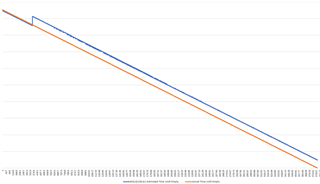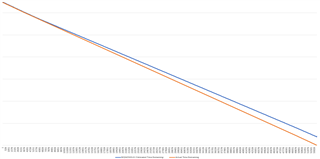We are currently using the BQ34Z100-G1 in the battery packs for our device. We have noticed the estimated time until empty is very inaccurate at low loads (100-200mA). We have also noticed the fuel gauge estimated minutes until empty randomly jumps (see attached graph) while the SOC stays the same. I have ran several successful learning cycles on different battery packs with similar results. I have attached the logs for a 150mA, 200mA, & 1.5A discharge cycles, and the learning cycle log for reference. Is there any way to improve the fuel gauge accuracy at lower loads? The gauge seems to be accurate down to the minute at loads of 1A or more. Also, our battery packs are lithium ion 8S1P configuration using the LG INR18650F1L cells, 3250mAh capacity.  Discharge_GoldenImage001_1.5A.csvDischarge_GoldenImage001_150mA.csvDischarge_GoldenImage001_200mA.csvLearning Cycle - GoldenImage001.csv
Discharge_GoldenImage001_1.5A.csvDischarge_GoldenImage001_150mA.csvDischarge_GoldenImage001_200mA.csvLearning Cycle - GoldenImage001.csv
-
Ask a related question
What is a related question?A related question is a question created from another question. When the related question is created, it will be automatically linked to the original question.


